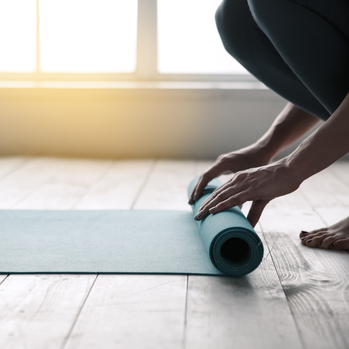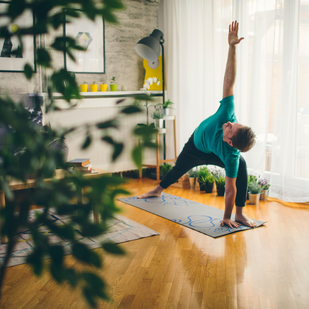Spoiler: if you don’t want to change your life, don’t start a yoga practice.This was going to be a piece summarising some of my FAQs and some top-tips for newbies. Instead, I’m afraid I’ve gone to the heart of things. (FAQs are here if that’s what you’re looking for, loads of good info for beginners.) Starting a yoga practice: It can be exciting, confusing and perhaps, a little daunting.
Let’s be clear from the outset, yoga is for everybody. All are welcome here. Starting where you are now is the right place to start. You do not need to look a certain way, shape, size, colour, or sex. As you are now is perfect. You are ready to begin, the fact you are reading this probably means your journey has already begun. How long it will take, well…read on. Yoga is more than the postures. Yoga comes from the Sanskrit word ‘yuj’, which means ‘to yoke’. (Yoking was a practice used to connect and harness two animals. They would be ‘yoked’ together, typically at their necks, to then be able to perform tasks, such as ploughing a field.) To yoke is to create a union, and this is typically how we hear yoga defined today, a union of ‘the self’ with the ‘true-self’. Ultimately, it’s a piercing of illusion or peeling back of layers, the word ‘yoga’ in and of itself is already a paradox. The true essence of yoga is uniting two things that were never actually separate to begin with. It is just the illusion of separation that we need to remove.
Through asana we build strength in the body, promote health and remove tension and energetic blocks. We use the breath here to ensure we aren’t straining and our mind focuses on our breath, balance and openness. This is a type of moving meditation – if your mind wanders, you’ll lose the thread of your breath, or your balance, or go too deep, or not deeply enough, into the pose. Pranayama, along with other benefits, gives our mind a single focus, which again, is a kind of meditation. A specific meditation part of the class may also be offered, which also trains the mind. The Four PsAlongside physical and physiological benefits these techniques also help us psychologically as (when practiced correctly) they share the quality of stilling the mind – bringing peace. Yoga Chitta Vritti Nirodha ~Patanjali, Yoga Sutras. Yoga is the settling of the mind into silence. When the mind has settled, we are established in our essential nature, which is unbounded Consciousness. Our essential nature is usually overshadowed by the activity of the mind.
It’s good and it keeps unfolding for your benefit. For many beginners the novel experience of this balance, internal stillness or unity – even if only briefly glimpsed on the mat – is what captivates them. Interpreted as a sense of well-being it feels familiar and is often described as ‘home’. Most would say that this is what initially brings them ‘back to the mat’.
We should remember: The very root of all the yogic practices is to reach only one goal: enlightenment (freedom). The elements within our practice are our tools for this goal.* (Don’t worry, there’s joy along the way.) If we reach a constant state of stillness and steadiness of mind we can dispense with the tools, for we’ve reached freedom, enlightenment, achieved stability in pure awareness, which is understood by some as Samadhi.
This changeability keeps the practice fresh and constantly invites us to the present moment. (Which serves us well, as the ‘now’ is the only reality. The future is your imagination and the past is impossible to live in. All you’ve got is ‘now’.) There are many styles of yoga and I would encourage you to do your research, be open, and give it a try, see which style and teacher you gel with. A good teacher will always be able to give modifications and extensions for poses and be open to your questions. Use your brain, maybe don’t hit an Ashtanga level 2 or hot yoga class if you’ve mainly been ‘yoked’ with your couch during lockdown. There’s no shame in being a beginner, in fact, I still love taking a beginners classes as much as I enjoy teaching them (that’s my jam), it’s an inward journey after all. Find a teacher that supports you in your practice and your ‘going-in’. *Further elements are used as we broaden our practice. Please see the yoga sutra of Patanjali for more information on the ashtanga (eight-limbs), which guide us on how to live a meaningful and purposeful life.
Comments are closed.
|





 RSS Feed
RSS Feed
